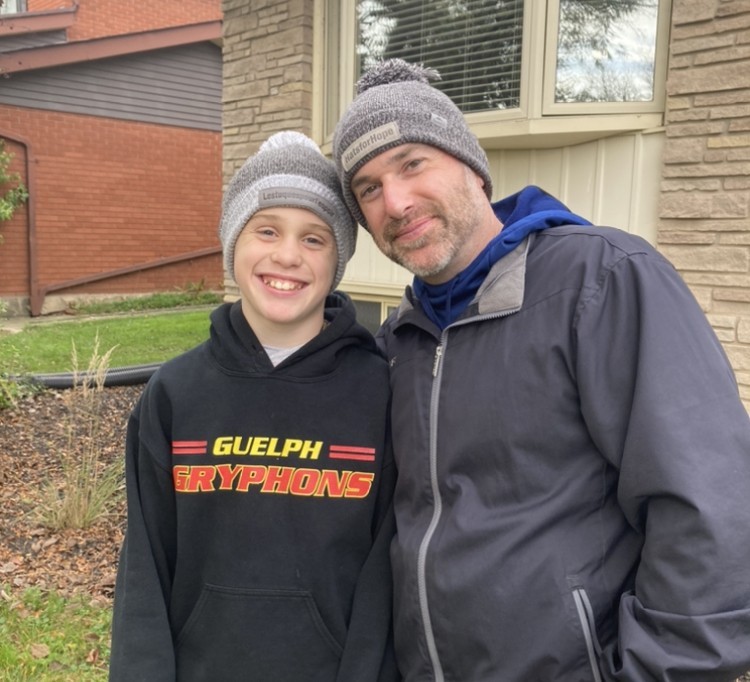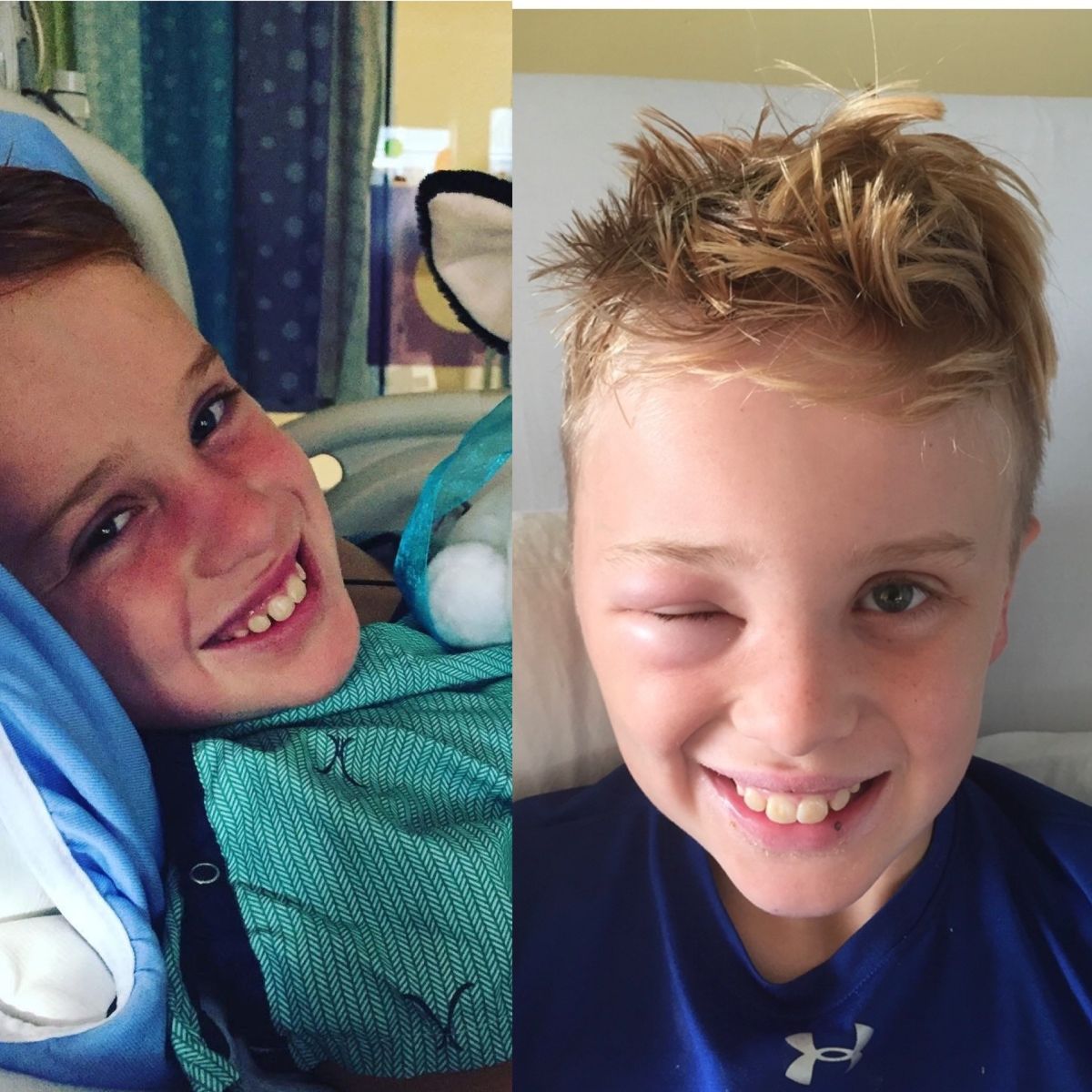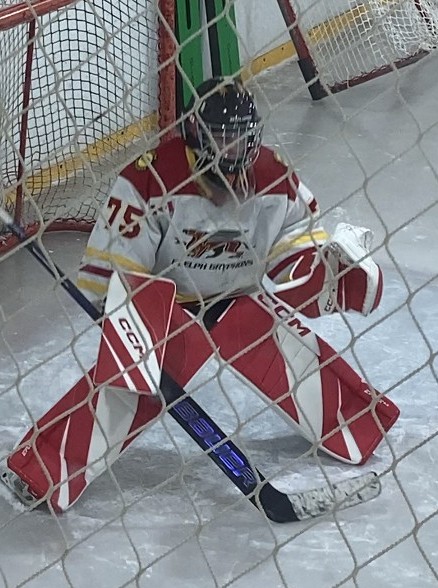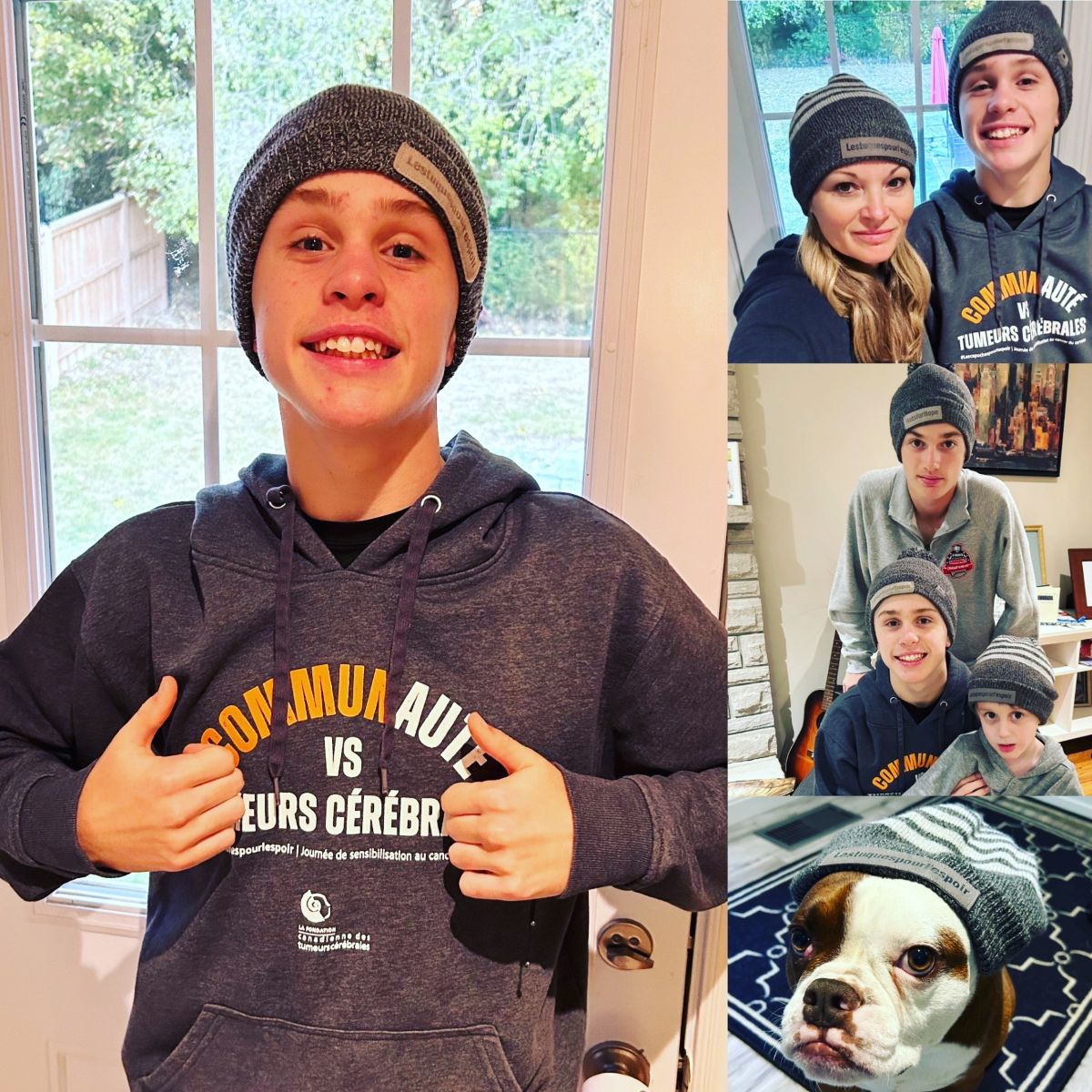
Sam’s story of strength and healing
Kelly Dubuc’s son, Sam, has been easygoing from day one.
“He was just chill out of the gates,” Kelly, of Guelph, Ont., recalls. “I called the nurse in after he was born and said, ‘I think there’s something wrong with him. He never cries.’ She put her hand on my shoulder and said, ‘Consider yourself lucky. You’ve got an easy baby.’”
Through the years, he’s maintained the same happy, positive attitude.
That’s why Kelly didn’t think much of it when, during a routine eye exam at five years old, the optometrist commented on Sam’s “interesting eyes.” Sam had never complained of headaches or eye troubles, so Kelly wasn’t concerned when the optometrist wanted to get additional images.
She was told to wait for a referral to the University of Waterloo, which never came.
“I’m a registered nurse, so I thought maybe he didn’t fit the triage queue or whatever,” Kelly says. “The optometrist never followed up about it, so it fell off my radar.”
“There’s something very wrong”
 Then, the COVID-19 pandemic hit, and Sam missed his next routine eye exam. Once services opened up again, Kelly booked an appointment.
Then, the COVID-19 pandemic hit, and Sam missed his next routine eye exam. Once services opened up again, Kelly booked an appointment.
Sam, eight years old at the time, went with his dad for the eye exam on August 25, 2020.
“The optometrist took one look in his eyes and said, ‘You need to take him to the emergency department right now. There’s something very wrong.’”
As the hospital in Guelph didn’t offer neurological services, Sam was taken to McMaster Children’s Hospital, in Hamilton, Ont. The emergency room doctor recommended a CT scan, but Kelly had reservations due to Sam’s exposure to radiation at such a young age. The doctor said that with Sam’s lack of symptoms, they could wait for the MRI, which was to happen that week.
After an hour drive home to Guelph, Kelly was called by an ophthalmologist from another hospital in Hamilton, who wanted to see Sam immediately. It was about 12:30 a.m. at that point, Kelly recalls, but they got in the car and drove back to Hamilton. After a brief exam, the ophthalmologist agreed that Sam could wait for the MRI and they again, headed home.
Sam’s MRI experience
The week went by, and the referral for the MRI never came. Kelly followed up with the MRI department at McMaster Children’s Hospital, explaining that the MRI was urgent. He was booked in for September 21, 2020, nearly a month after his initial eye exam.
While waiting for his appointment, Sam saw another ophthalmologist at McMaster Children’s Hospital. This ophthalmologist suggested Sam could have a condition called drusen, which are tiny, yellow deposits that build up under the retina. He said they could probably cancel the MRI, but Kelly declined, wanting to keep the appointment for peace of mind.
Sam’s MRI appointment meant another late night for him, as he was brought in around 10:30 p.m.
“He was a trooper,” Kelly says. “We prepared him as best as we could, and he was so good about it.”
Shortly after Sam went in for his MRI, one of the technicians asked Kelly if SickKids in Toronto had ever taken images of him.
“In that moment, I knew they were seeing something they didn’t want to see,” Kelly says.
Learning Sam’s diagnosis
Following the MRI, Kelly’s fears were confirmed. She and Sam were rushed to the emergency department, where a neurosurgeon broke the news that Sam had a brain tumour. The tumour, likely a pilocytic astrocytoma, had caused severe hydrocephalus, which is a buildup of cerebrospinal fluid that leads to pressure in the skull.
“He made it seem like he was within days of having some catastrophic event that could have left him with permanent disabilities,” Kelly says.
The next day, Sam was brought in for surgery—an endoscopic third ventriculostomy, which creates a bypass for the cerebrospinal fluid and eliminates the need for a shunt.
“The surgeon felt fairly confident that it would work and he wouldn’t need a shunt, which would have put some restrictions on the activities he could do,” Kelly says. “And, they weren’t able to biopsy his tumour, because it’s deep in his thalamus, so it’s just not safe to go there unless they absolutely have to.”
Sam has had regular MRIs since, first after his operation, then every three months, every six months, and finally, every year. Fortunately, his tumour hasn’t changed much since he was diagnosed.
“We’re told it will go one of two ways,” Kelly says. “It will either grow, or it will start to recede as he goes through puberty, which will determine the next step.”
A thriving teenager
 Sam, now 13, has been thriving, by all accounts. He plays hockey and football, spends time with his family, including an older and a younger brother, and lives his life without limitations.
Sam, now 13, has been thriving, by all accounts. He plays hockey and football, spends time with his family, including an older and a younger brother, and lives his life without limitations.
“He’s a teenager now, so there are certainly some personality changes that, every time I see them, I’m like, ‘Oh, is this your tumour? Or is this puberty?’” Kelly says. “So far, it seems to be puberty. But he continues to be a delight. He’s so positive. I always say, the world needs more of him.”
Kelly says he cried only twice through his experience—once when he was diagnosed, and once when he couldn’t swim post-surgery because he couldn’t get his head wet.
“I see the stories and I know how lucky we are, and I try not to forget that,” Kelly says. “But, those weeks leading up to his MRIs are stressful because he really didn’t have symptoms before, so I’m always worried.”
The importance of regular eye exams
Looking back, Kelly still struggles to pinpoint the signs. As a registered nurse, married to a nurse practitioner, Kelly says nothing stood out to the point they were concerned.
“We can say, ‘Well, this makes sense now,’ but it was never anything obvious,” Kelly says, of Sam having symptoms. “We have substantial medical knowledge and background to note what we should have been looking for, and it wasn’t there.”
That’s why she urges anyone—medical background or not—to get your regular eye exams.
“From the first time there was a mention there could be something going on, to Sam’s next exam three years later, the change was significant,” Kelly says.
The hardest thing throughout the experience, for Kelly, has been not knowing how to answer Sam’s tough questions.
“He still asks me, ‘Do I have cancer?’ and I’m like, ‘I don’t know. I honestly don’t know,’” Kelly says. “He just trusts that we’re doing everything we can and that things will work out. And so far, they have.”
Holding on to hope
 Holding on to hope is what’s brought the family so far.
Holding on to hope is what’s brought the family so far.
“‘Hope is the one thing that can get you through the darkest times,’” Kelly says, of her favourite quote.
“When we received Sam’s diagnosis, the fear was instant and overwhelming. Without hope, I’m not sure how we would have gotten through this.”
The family works together to bring awareness to brain tumours, participating in Brain Cancer Awareness Day each year on October 24 and joining in the Brain Tumour Walk. Sam, thoughtfully, has done birthday fundraisers for Brain Tumour Foundation of Canada, too, wanting to help others in similar situations.
Every bit counts, Kelly says, and contributes to advances in treatments like those that have helped her son.
“Years ago, the only course of treatment would have been a shunt,” Kelly says, “so it just goes to show the advances they’re making with biologic therapies. Still, we need to do more.”